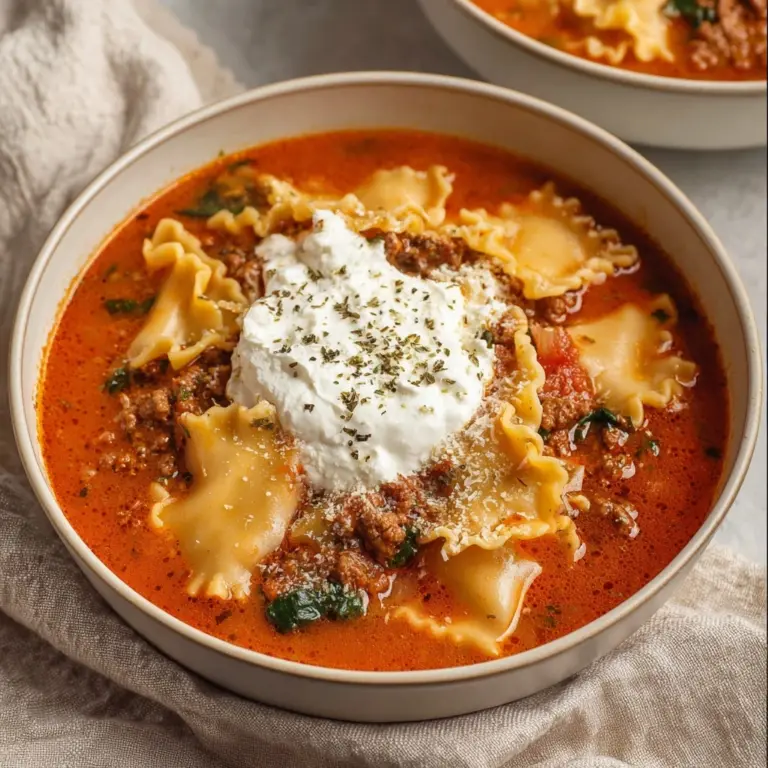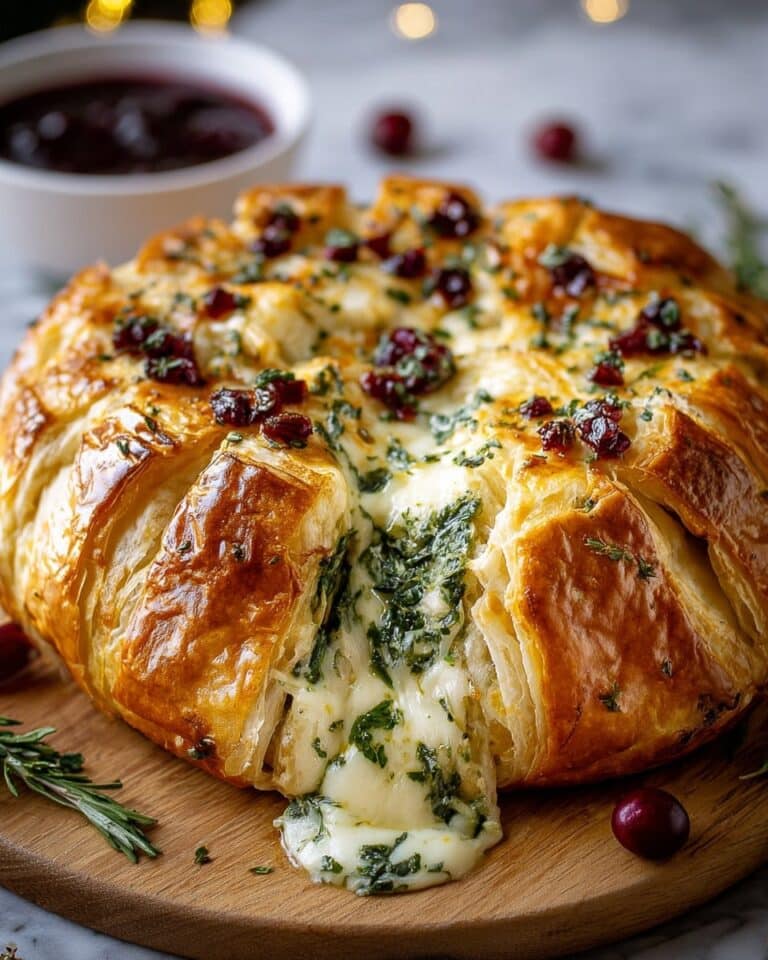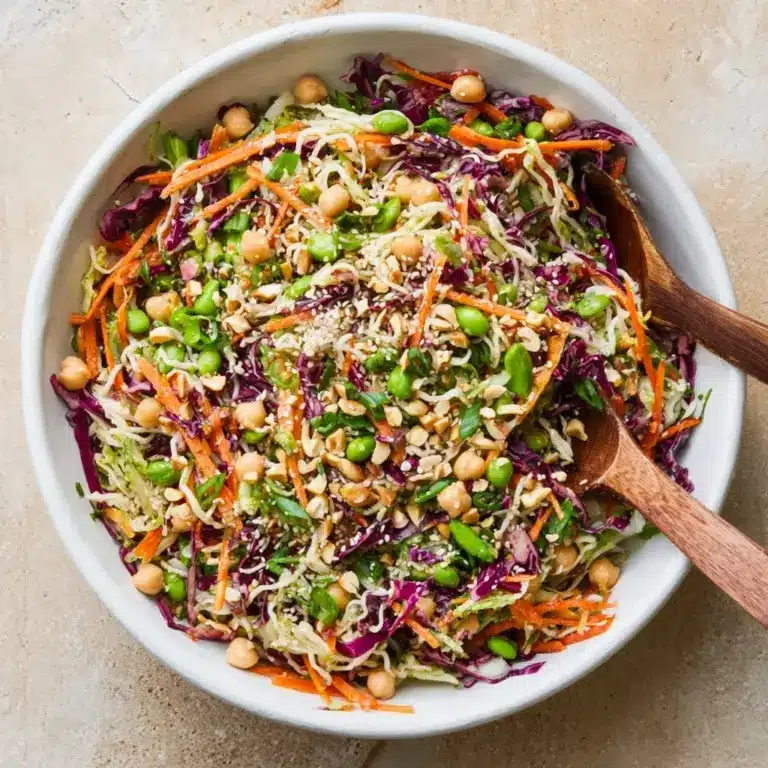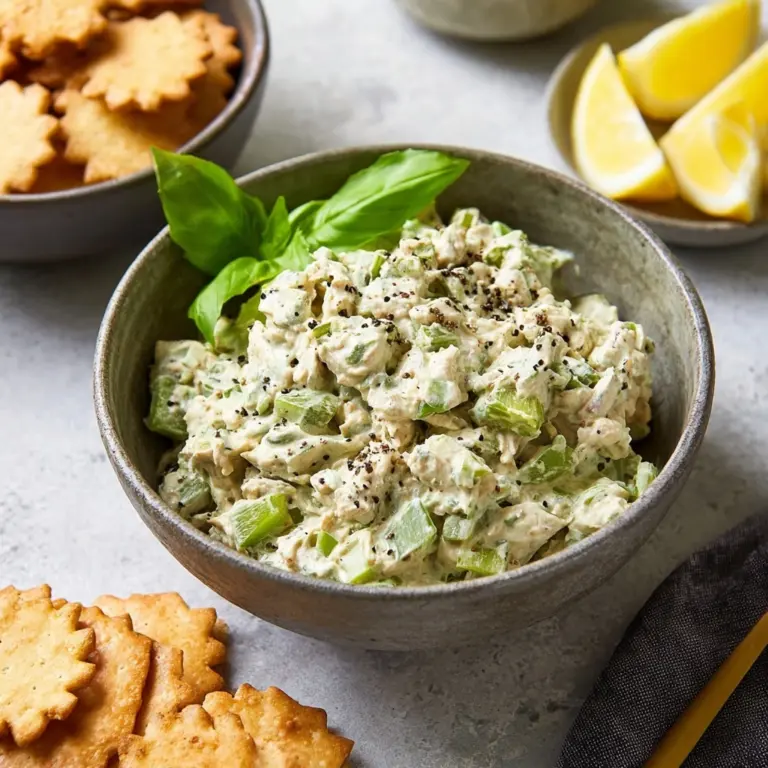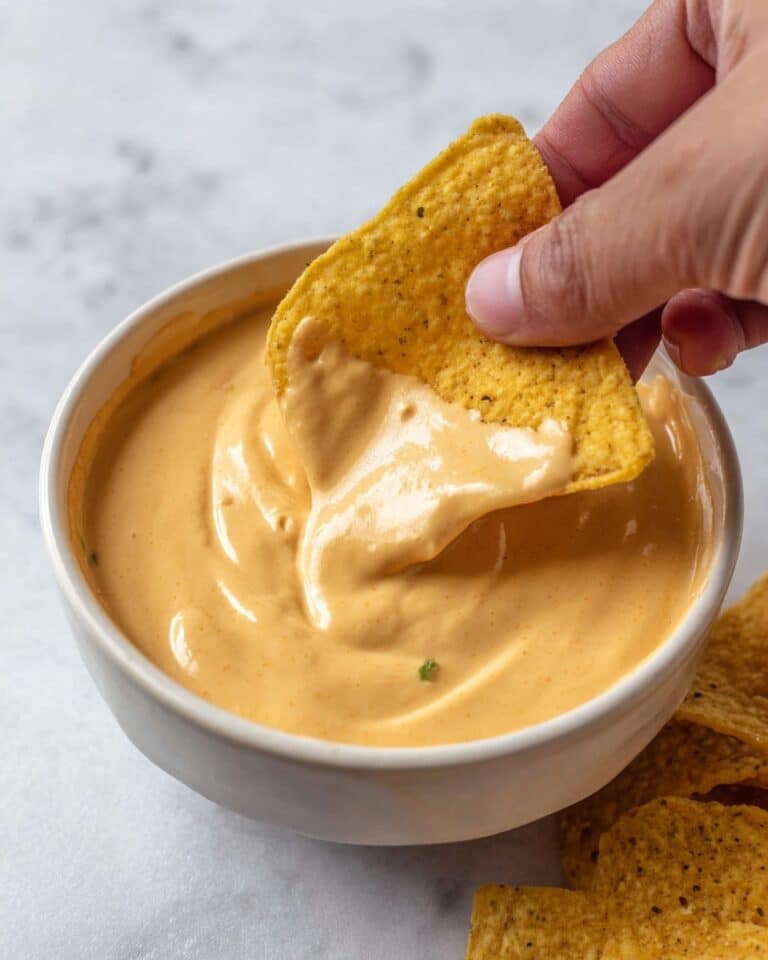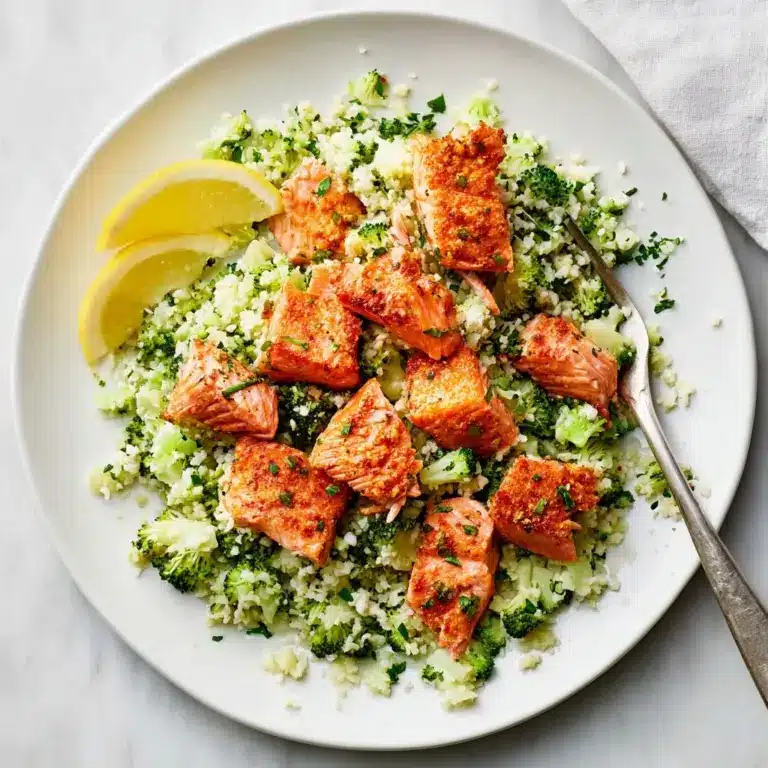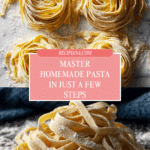How to Make Homemade Pasta Recipe
If you’ve ever dreamed of silky, tender noodles layered with your favorite sauce, let me introduce you to the magic of fresh pasta made at home. How to Make Homemade Pasta isn’t just a recipe—it’s a joyful, hands-on ritual that transforms everyday ingredients into something truly extraordinary. Whether you mix and knead by hand or let your stand mixer do the heavy lifting, this method yields irresistibly rich flavor and supple texture you just can’t buy at the store. Let’s roll up our sleeves and make pasta night unforgettable!
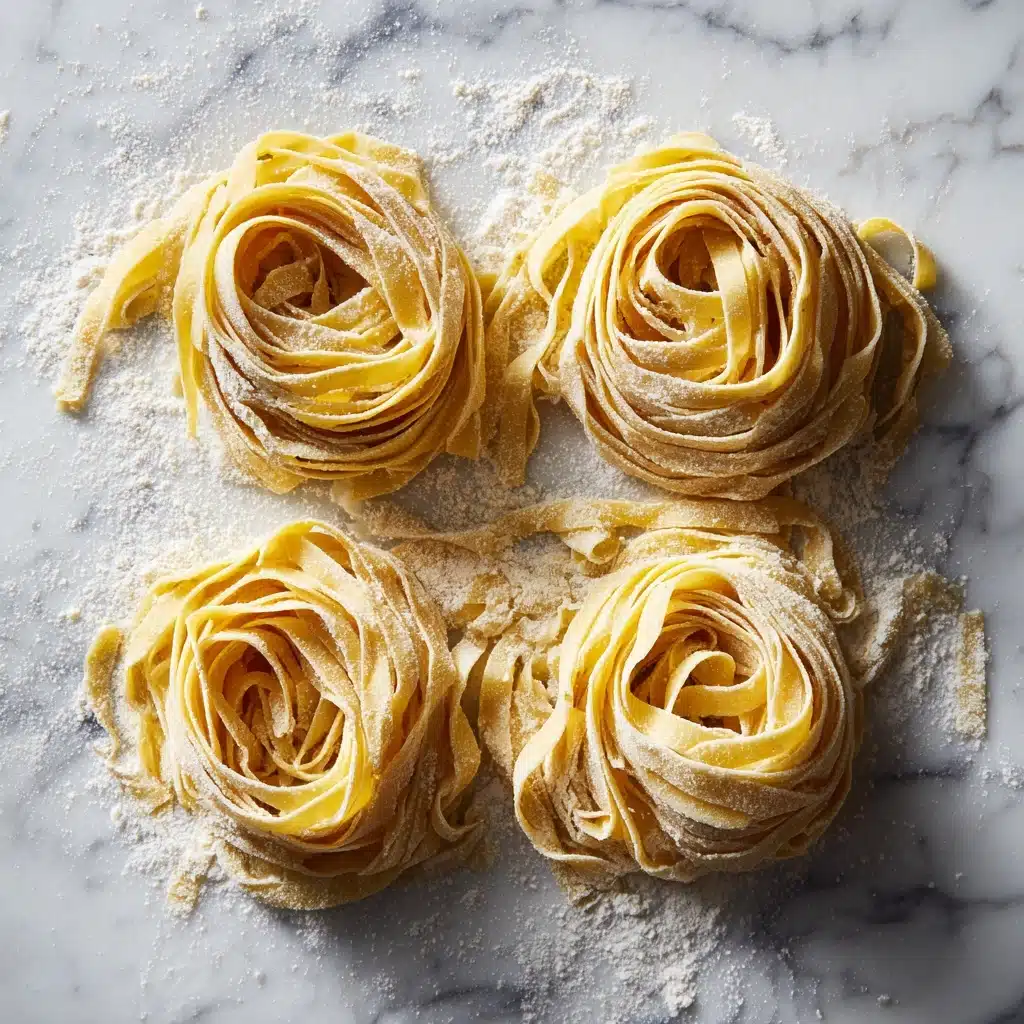
Ingredients You’ll Need
Don’t worry, you won’t need a long shopping list—just a few simple ingredients, each one playing a crucial role in the final dish. With staples like good flour and fresh eggs, every bite of this pasta bursts with authentic Italian character.
- 00 flour or all-purpose flour: This ultra-fine flour makes your pasta exceptionally smooth—use 00 if you can find it, or reach for trusty all-purpose.
- Large eggs: The star ingredient gives homemade noodles their beautiful color, creamy flavor, and delightfully springy texture.
- Additional flour for rolling: Dusting the dough as you work keeps everything from sticking, so your sheets of pasta stay gorgeously intact.
How to Make How to Make Homemade Pasta
Step 1: Prepare Your Ingredients and Workspace
Before you dive in, gather all your ingredients and clear a nice, flat surface for kneading the dough. Having your tools—fork, rolling pin, or pasta machine—within reach makes the process even smoother. Trust me: setting up in advance means you can focus on the fun part!
Step 2: Combine the Flour and Eggs
For the classic by-hand method, heap your flour into a mound and create a wide well in the center. Crack those gorgeous eggs into the well and pierce the yolks with a fork, then begin whisking, gently pulling flour from the edges as you go. If your flour “walls” collapse, don’t fret—just pull everything together and keep mixing. You’ll soon have a sticky, shaggy mess, which is exactly what you want at this point. If you’re using a stand mixer, place the flour and eggs in the bowl and let the paddle attachment work its magic until the ingredients come together.
Step 3: Knead the Dough
Time to get hands-on! As the dough starts to form, switch from your fork to your palms and knead until the texture turns smooth and elastic—about 5 minutes is perfect. This step develops gluten, giving your noodles that signature chew. Wrap your dough ball tightly in plastic wrap, then let it rest at room temperature for at least 30 minutes. This break makes rolling out silky sheets so much easier.
Step 4: Roll Out the Dough
Unwrap the dough, slice it into 4 even pieces, and cover the pieces you’re not working with (so they don’t dry out). For rolling by hand, flour your surface, shape a piece into a rectangle, and roll to a 1/8-inch thickness—thin, but not paper-thin! If you’re using a pasta roller, dust it with flour and feed the dough through the widest setting, folding it over and running it through again a couple more times to get a sturdy, even sheet.
Step 5: Cut and Dry the Pasta
Now comes the creative part: cutting your pasta into whatever shapes you like! Whether you’re making wide ribbons for pappardelle or slender strands for linguine, dust your sheets with flour or semolina, fold, and slice. Drape each batch you cut over a drying rack or a clean kitchen towel, letting them air-dry for about 30 minutes. Don’t forget—you can cook fresh pasta right away, or dry it a bit longer for storing.
Step 6: Cook and Serve
Bring a big pot of salted water to a lively boil, then drop your fresh pasta in, stirring to prevent sticking. It usually takes just 90 seconds to 4 minutes, depending on shape and thickness. Watch closely: the noodles rise to the surface when ready. Always save some starchy pasta water for your sauce—it’s a secret weapon for perfect texture. Drain and toss the pasta with your favorite sauce, and enjoy every single bite!
How to Serve How to Make Homemade Pasta
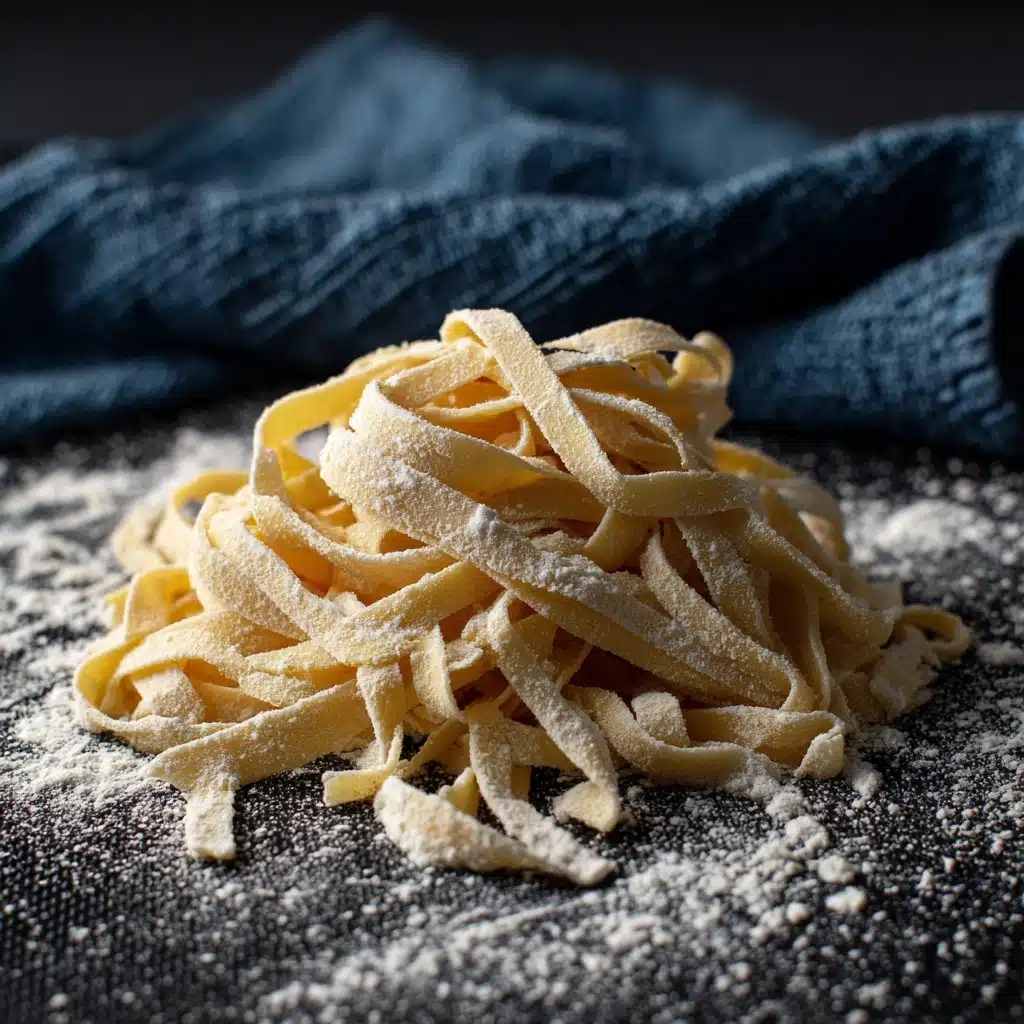
Garnishes
A shower of freshly grated Parmigiano-Reggiano, a drizzle of good olive oil, or a scatter of vibrant fresh herbs like basil or parsley can turn How to Make Homemade Pasta into a truly restaurant-worthy dish. A little black pepper or lemon zest also adds a lovely finishing zing.
Side Dishes
Homemade pasta pairs beautifully with a crisp green salad tossed in a tangy vinaigrette, or perhaps some garlicky sautéed broccolini on the side. Warm, crusty bread is perfect for sopping up any extra sauce—don’t let a single drop go to waste!
Creative Ways to Present
Try twirling neat nests on each plate with tongs, or serving How to Make Homemade Pasta family-style in a large platter at the center of the table. For a dinner party, layer fresh pasta with roasted vegetables and cheese for a show-stopping lasagna—or offer an interactive “pasta bar” with a variety of toppings and sauces for everyone to build their perfect bowl.
Make Ahead and Storage
Storing Leftovers
Once your fresh pasta is cooked, cool any leftovers completely before storing them in an airtight container in the refrigerator. They’ll keep their tender bite and fresh flavor for up to 2 days. A light toss in oil before storage helps keep the noodles from sticking together.
Freezing
To freeze How to Make Homemade Pasta, dust the uncooked noodles with flour, then coil them gently into small nests. Place these on a parchment-lined baking sheet and freeze until solid before transferring to a freezer-safe bag or container. The pasta will keep beautifully for up to 3 months—just add straight to boiling water from frozen when ready to cook.
Reheating
Warm up refrigerated leftovers by placing them in a pan with a splash of water or sauce, and gently tossing over low heat until heated through. Avoid the microwave if you can, as it can turn pasta mushy. For frozen pasta, no need to thaw—simply drop the nests into boiling water and cook as usual.
FAQs
Can I make How to Make Homemade Pasta without a pasta machine?
Absolutely! All you need is a rolling pin and some elbow grease. While a pasta machine does make the job quicker and more precise, hand-rolling gives your noodles a rustic charm and works perfectly with this recipe.
What’s the difference between 00 flour and all-purpose flour for pasta?
00 flour is more finely milled than all-purpose, making it ideal for silky, soft pasta. All-purpose flour still delivers delicious results, but may yield a slightly chewier texture. Either flour will work in a pinch, so use what you have on hand!
How thin should I roll the pasta sheets?
For most shapes, target a thickness of about 1/8 inch or thinner—think sturdy, but still see-through when held up to the light. Thinner noodles cook faster and absorb sauce beautifully.
Can I flavor the pasta dough with herbs or spices?
Yes! Finely chopped fresh basil, spinach purée, or even a pinch of chili flakes can be added to the dough before kneading. This is a fun way to personalize How to Make Homemade Pasta and add bursts of color or flavor.
How do I keep the pasta from sticking together after cutting?
Dusting generously with flour or semolina right after cutting will keep your noodles separate. Lay them out on a floured surface or drape over a rack, and handle gently until you’re ready to cook or store.
Final Thoughts
If you’ve ever wanted to turn a simple dinner into a heartfelt celebration, this is your ticket. Give How to Make Homemade Pasta a try—it’s easier than you might think, so rewarding, and truly brings people together around the table. There’s just something magical about sharing a bowl of pasta you made with your own hands!
Print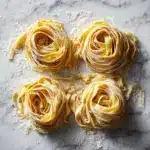
How to Make Homemade Pasta Recipe
- Total Time: 55 minutes
- Yield: 4 servings 1x
- Diet: Vegetarian
Description
Learn how to make delicious homemade pasta from scratch with this easy-to-follow recipe. Whether you prefer to make the dough by hand or with a stand mixer, rolling out the pasta sheets, cutting them into your desired shapes, and cooking them to perfection will result in a delightful pasta dish that’s sure to impress.
Ingredients
For the Pasta Dough:
- 2 ¼ to 2 ½ cups 00 flour or all-purpose flour
- 4 large eggs
- additional flour for rolling
Instructions
- Making the dough by hand: On a flat surface, place flour in a mound, create a well, add eggs, whisk, incorporate flour, form dough, knead, and let rest.
- Making the dough in a stand mixer: Mix flour and eggs in a stand mixer, beat until smooth, and let rest.
- Rolling the pasta dough: Cut dough into pieces, roll out, cut into strips or shapes, and dry.
- Cooking the pasta: Boil salted water, cook pasta for 90 seconds to 4 minutes, and toss with sauce.
- Storing homemade pasta: Dust with flour, dry, fold into nests, and store in an airtight container.
- Prep Time: 45 minutes
- Cook Time: 10 minutes
- Category: Main Dish
- Method: Mixing, Rolling, Cutting, Boiling
- Cuisine: Italian
Nutrition
- Serving Size: 1 serving
- Calories: 300
- Sugar: 1g
- Sodium: 50mg
- Fat: 2g
- Saturated Fat: 0.5g
- Unsaturated Fat: 1.5g
- Trans Fat: 0g
- Carbohydrates: 60g
- Fiber: 2g
- Protein: 12g
- Cholesterol: 95mg
Keywords: homemade pasta, pasta from scratch, fresh pasta recipe

